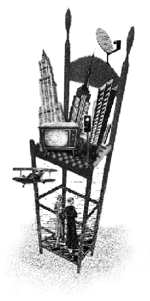 Katarzyna Gaca
Katarzyna Gaca
Lillian Faderman fires an opening salvo to "Academic postmodernists" in her book about the debt all emancipated American women owe to the lesbian pioneers of the nineteenth and early twentieth century: "To Believe in Women will perhaps be seen as being in opposition to postmodernism which does not recognize the possibility of reclaimed women of the past as lesbians." Faderman, not one to let a little theory scare her off her project, neatly sidesteps arguments about recasting historical people and practices under contemporary rubrics by claiming that she is using "lesbian" as an adjective rather than a noun, that the term "describes intense woman-to-woman relating and commitment."
Faderman's argument is fairly simple: given the restrictive nature of most marriages and family responsibilities in the nineteenth and early twentieth centuries, many women who were at the forefront of feminist battles in political, educational and social welfare spheres, were untraditional in their domestic and emotional relationships. Their independence from men¨and affections for other women¨Faderman argues, cannot be separated from the material and emotional conditions that allowed them, or led them to, their radical politics. In an effort to do away with the euphemisms and clinical language of the era, Faderman recasts these women, many of whom lived in devoted "romantic friendships" or "Boston" marriages, and few of whom were self-identified as "inverts," as "lesbians" in behaviour if not in name, so that they and their pioneering social achievements would be recognized as part of a lesbian past.
Pride in historical lineage is always a compelling argument, particularly for any oppressed group, and Faderman comes from that early school of Gay and Lesbian Studies, which still has a popular and healthy following, that would reclaim Plato, Shakespeare, Michelangelo, and so on. No doubt this book, like her earlier books, Odd Girls and Twilight Lovers and Surpassing the Love of Men, will garner prizes and sell very well for it is a neat little argument. Faderman's would have done better had she followed Foucault's work (that archpostmodernist), tracing the formation of the homosexual as a juridical subject in the late nineteenth century. A parallel study of the extent to which these women took part in the formation of a sexual and emotional way of being that was something new in history would have been far more nuanced than one which simply marshals them into an identification parade.
As a parade, the better known figures do constitute an impressive bunch. They are: suffragettes Susan B. Anthony, Anna Howard Shaw, and Carrie Chapman Catt; Jane Addams, the winner of the Nobel Prize for Peace in 1931; Carey Thomas, the first female president of Bryn Mawr College and Mary Woolley, the president of Mount Holyoke; Emily Blackwell, the founder of the Women's Medical College of the New York Infirmary; Martha Eliot, chief of the Children's Bureau in the 1950s; and, the influential circle of social reformers around Eleanor Roosevelt. The details of their intimate lives, culled mostly from archival material and read between the lines of earlier biographies, are fascinating, and the life-long relationships that many of these women sustained with their female loves draw a picture of commitment, equal parts political and emotional, and, often, of privilege.
Yes, one's bosom cannot but swell with pride, but the lineage is tenuous at best. As Faderman writes in the introduction, "The binary paradigm of homosexual/ heterosexual would probably have been baffling to many of them even if they had known those terms." Yet, rather than emphasize the complexity of her subjects' sexual and emotional engagements, Faderman's heavy insistence on the adjectival "lesbian," reorders their world to match our own, a world which could use some alternative to the hetero/homo binary models more than another history in the name of (American) sexual nationalism. ˛